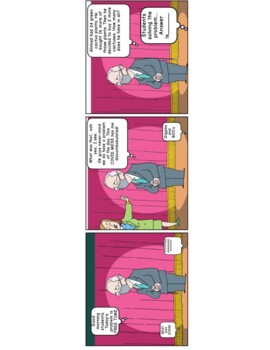COMIC STRIP MORNING WORK/BELL WORK/ EXIT SLIP! A FUN WAY TO BE HIP :)
All Around
2 Followers
Grade Levels
1st - 4th
Subjects
Resource Type
Standards
CCSSCCRA.R.2
CCSSMP1
Formats Included
- PDF
Pages
1 page
All Around
2 Followers
Description
CALLING ALL MATH/READING TEACHERS!
- Are you tired of not having enough time to make time to be hip with your students and ACTUALLY let them enjoy doing MATH?
INCLUDES:
-3 PANEL COMIC STRIP MATH WORD PROBLEM
-Word problem touches the standard of adding 3 numbers together
THIS CAN BE USED AS MORNING WORK, EXIT SLIP, BELL WORK, TIME FILLER.
BE SURE TO CHECK OUT MY PAGE AS I WILL ADD NEW COMICS DAILY!
Total Pages
1 page
Answer Key
Not Included
Teaching Duration
30 minutes
Report this resource to TPT
Reported resources will be reviewed by our team. Report this resource to let us know if this resource violates TPT’s content guidelines.
Standards
to see state-specific standards (only available in the US).
CCSSCCRA.R.2
Determine central ideas or themes of a text and analyze their development; summarize the key supporting details and ideas.
CCSSMP1
Make sense of problems and persevere in solving them. Mathematically proficient students start by explaining to themselves the meaning of a problem and looking for entry points to its solution. They analyze givens, constraints, relationships, and goals. They make conjectures about the form and meaning of the solution and plan a solution pathway rather than simply jumping into a solution attempt. They consider analogous problems, and try special cases and simpler forms of the original problem in order to gain insight into its solution. They monitor and evaluate their progress and change course if necessary. Older students might, depending on the context of the problem, transform algebraic expressions or change the viewing window on their graphing calculator to get the information they need. Mathematically proficient students can explain correspondences between equations, verbal descriptions, tables, and graphs or draw diagrams of important features and relationships, graph data, and search for regularity or trends. Younger students might rely on using concrete objects or pictures to help conceptualize and solve a problem. Mathematically proficient students check their answers to problems using a different method, and they continually ask themselves, "Does this make sense?" They can understand the approaches of others to solving complex problems and identify correspondences between different approaches.


